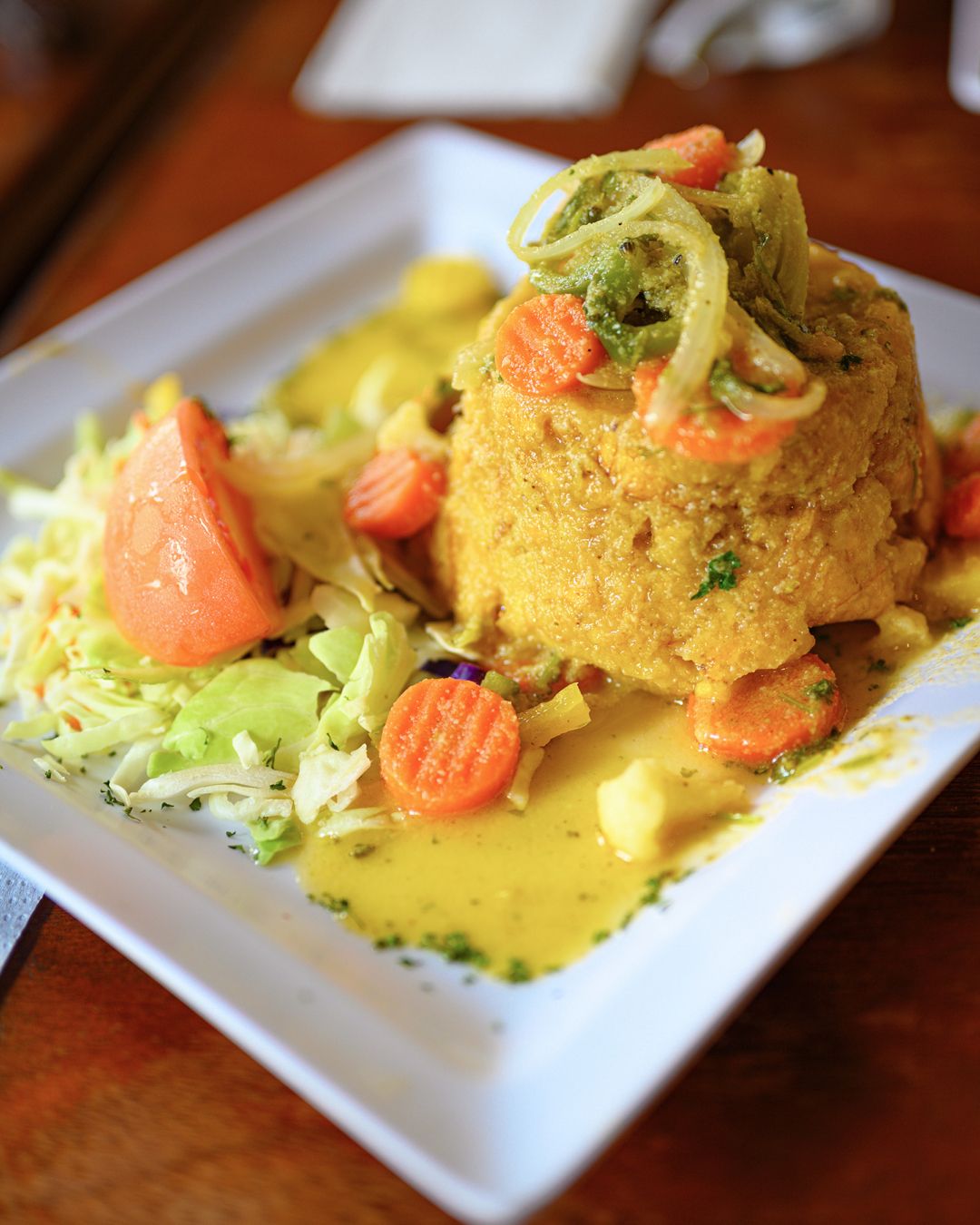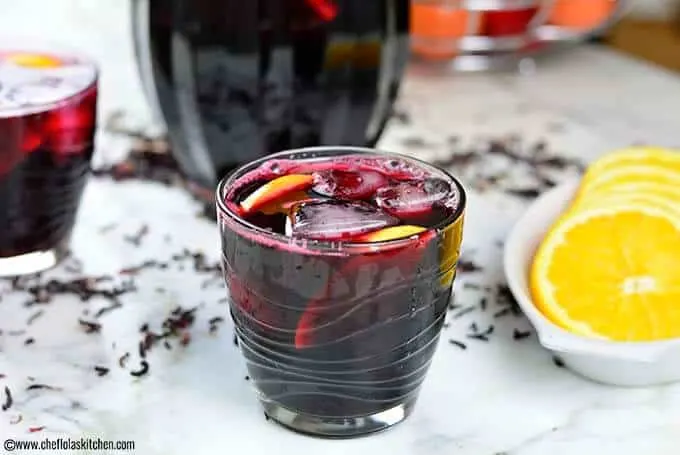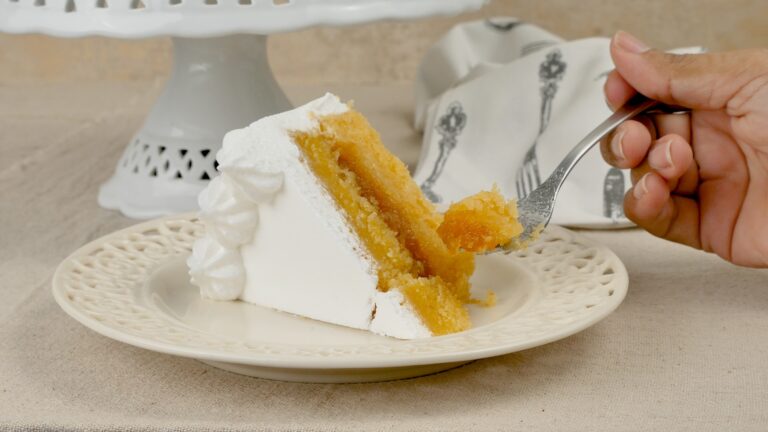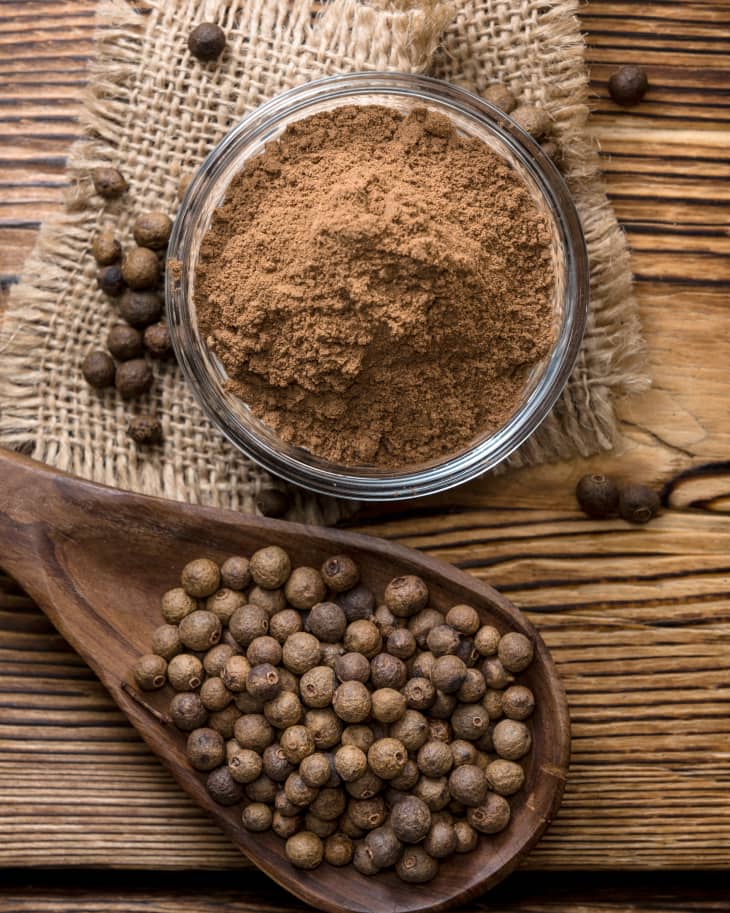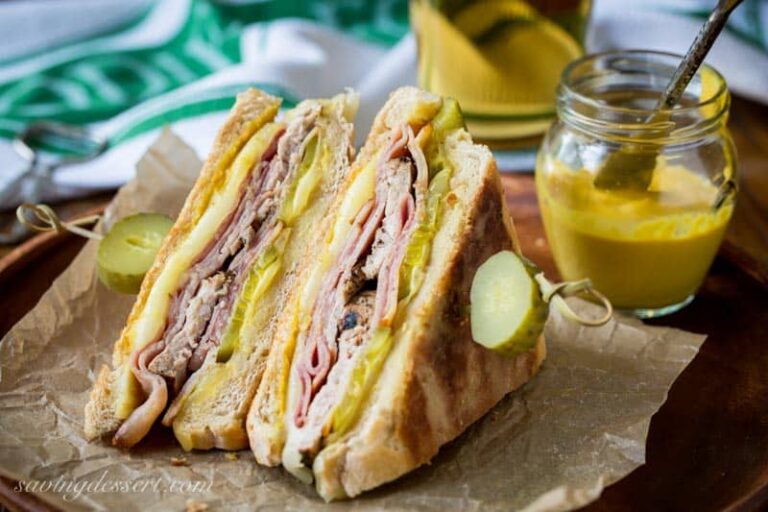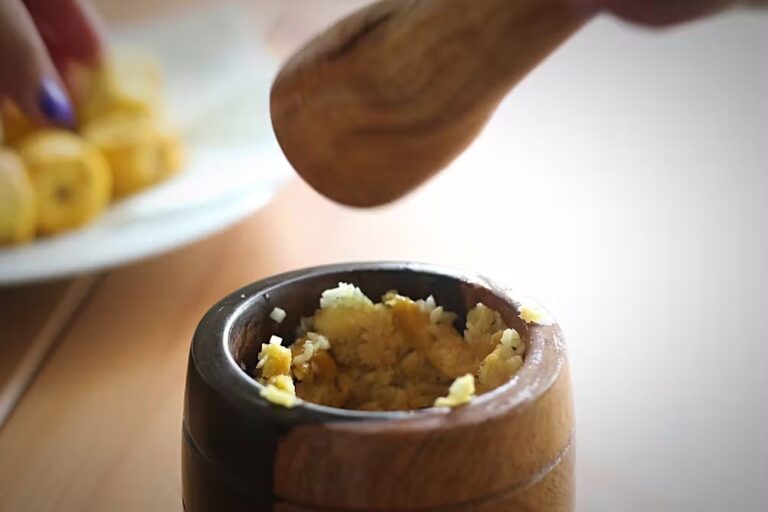Mofongo is a beloved dish rooted in Puerto Rican cuisine, known for its bold flavors and rich texture. Traditionally made with fried green plantains, pork cracklings, garlic, and spices, it’s a comfort food favorite. However, the classic preparation often includes high-fat ingredients and frying, making it less ideal for those seeking a healthier lifestyle.
Luckily, there are ways to enjoy Mofongo without compromising on health goals. With a few ingredient swaps and alternative cooking methods, you can create delicious low-fat and low-carb versions of this dish. These variations offer a healthier take on Mofongo, allowing you to savor its traditional essence while aligning with dietary preferences like low-fat, low-carb, vegan, or gluten-free lifestyles.
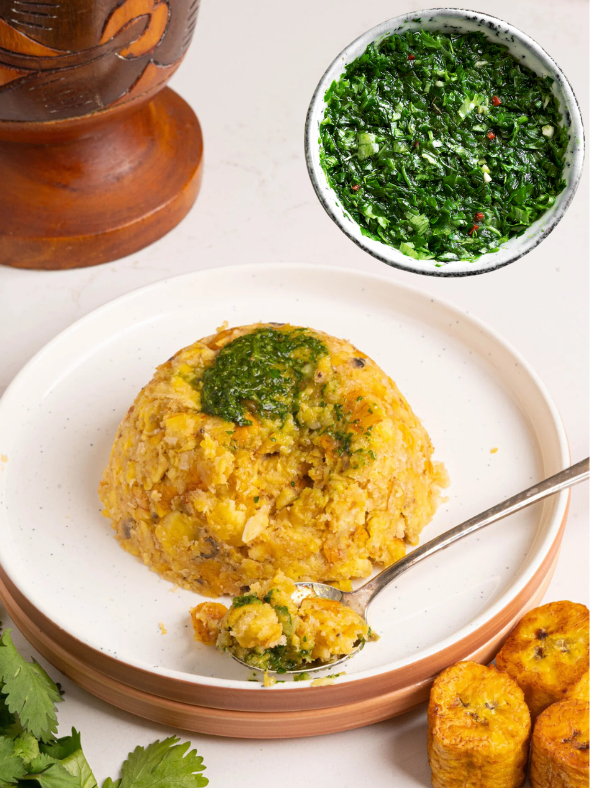
In this guide, we’ll walk you through everything you need to know about making healthier Mofongo, including ingredient substitutions, cooking tips, and nutritional benefits. Whether you’re a long-time fan or new to this classic dish, you’ll find options to suit your health needs without sacrificing the flavors you love. Let’s dive into the world of healthier Mofongo variations!
What is Mofongo? Understanding the Traditional Recipe
Mofongo is a classic Puerto Rican dish known for its hearty and flavorful composition. The traditional recipe involves green plantains that are fried until golden and then mashed with garlic, olive oil, and crunchy pork cracklings, known locally as chicharrones. This mixture is typically molded into a dome shape and served as a side dish or main course, often accompanied by a savory broth or protein like shrimp, chicken, or beef.

The origins of Mofongo can be traced back to the African fufu, which was brought to the Caribbean during the colonial era. Over time, it became a staple in Puerto Rican cuisine, with various local adaptations. The rich and savory flavors of the dish have made it a popular choice in restaurants and households alike.
While delicious, traditional Mofongo is not the lightest meal. The use of fried plantains and pork cracklings adds significant fat and calories, making it less suitable for those on a low-fat or low-carb diet. However, understanding the traditional recipe provides a foundation for exploring healthier alternatives that still capture the dish’s essence.
Healthier Alternatives to Traditional Mofongo: An Overview
For those looking to enjoy Mofongo while adhering to a healthier lifestyle, there are several ways to modify the traditional recipe without sacrificing flavor. By making strategic ingredient swaps and using alternative cooking techniques, it’s possible to create versions that are lower in fat and carbs, or cater to specific dietary needs such as vegan or gluten-free.
The key to healthier Mofongo lies in replacing or reducing high-fat components and carb-heavy ingredients. For example, instead of frying plantains, you can bake or air-fry them to achieve a similar texture with less oil. Pork cracklings can be substituted with leaner proteins like grilled chicken, shrimp, or even plant-based alternatives for a vegetarian twist.
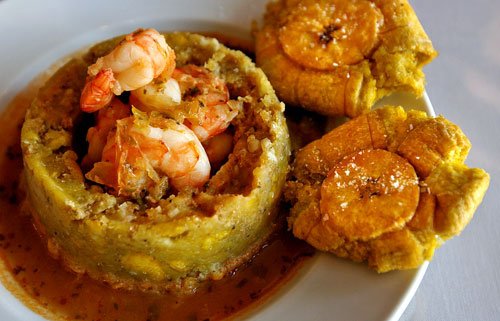
Low-fat variations focus on minimizing the use of oils and opting for heart-healthy fats, while low-carb versions may replace plantains with lower-carb vegetables like cauliflower or zucchini. These adaptations maintain the dish’s traditional appeal but with a lighter nutritional profile, making Mofongo accessible to a wider range of health-conscious individuals.
As we continue, we’ll delve deeper into specific recipes for low-fat and low-carb Mofongo, sharing ingredient choices and preparation tips that make these healthier versions just as satisfying as the original.
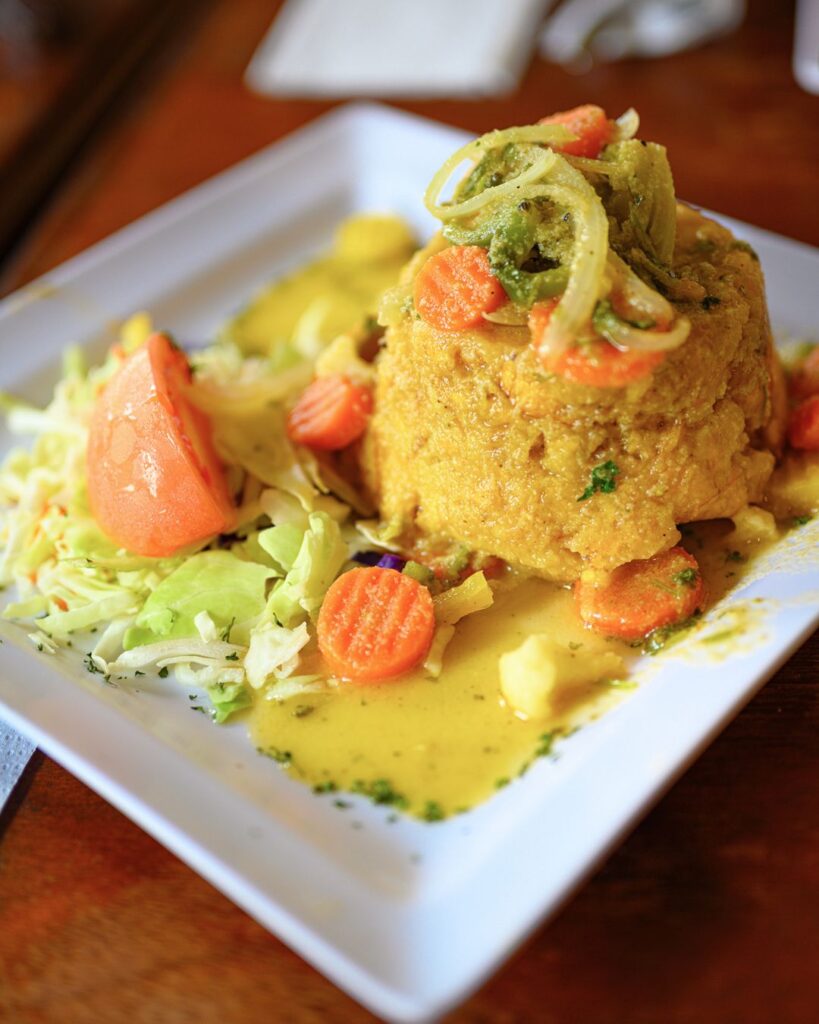
Low-Carb Mofongo: Recipe and Nutritional Benefits
For a low-carb Mofongo, the key is to replace the starchy plantains with a lower-carb alternative while still achieving the dish’s signature texture and flavor. Cauliflower is an excellent substitute due to its versatility and ability to absorb seasonings well. Here’s how you can make a delicious low-carb version of Mofongo.
Ingredients:
- 1 medium head of cauliflower, cut into florets
- 2 tablespoons olive oil, divided
- 3 cloves garlic, minced
- 1/4 cup low-sodium chicken broth (or vegetable broth for a vegetarian version)
- 1/4 cup crushed pork rinds (optional, for a crunchy texture)
- Salt and pepper to taste
- Chopped fresh parsley or cilantro for garnish
Preparation:
- Roast the Cauliflower: Preheat the oven to 400°F (200°C). Toss the cauliflower florets with 1 tablespoon of olive oil and spread them on a baking sheet lined with parchment paper. Roast for about 25-30 minutes until tender and slightly browned.
- Prepare the Garlic Mixture: In a skillet, heat the remaining 1 tablespoon of olive oil over medium heat. Add the minced garlic and sauté until fragrant, about 1-2 minutes.
- Mash the Cauliflower: Transfer the roasted cauliflower to a large bowl. Add the garlic mixture and a splash of chicken or vegetable broth. Using a masher or a fork, mash the cauliflower until it resembles the consistency of traditional Mofongo. Add more broth as needed to reach the desired texture.
- Incorporate the Crunch: If using, fold in the crushed pork rinds to add a crispy element that mimics traditional cracklings. For a vegetarian option, omit the pork rinds or use a low-carb, plant-based crunchy alternative.
- Season and Serve: Add salt and pepper to taste. Garnish with parsley or cilantro. This low-carb Mofongo pairs well with grilled shrimp or a fresh salad for a light and satisfying meal.
Nutritional Benefits:
- Low Carb Count: Cauliflower significantly reduces the carbohydrate content compared to plantains, making this dish suitable for low-carb and keto diets.
- Rich in Fiber: Cauliflower provides dietary fiber, which can aid digestion and support weight management.
- Healthy Fats: The use of olive oil offers heart-healthy monounsaturated fats, beneficial for maintaining cholesterol levels.
Low-Fat Mofongo: Ingredients and Preparation
Creating a low-fat version of Mofongo involves making a few thoughtful substitutions to reduce the dish’s overall fat content while preserving its signature flavors. Here’s how you can transform the traditional recipe into a lighter, low-fat alternative.
Ingredients:
- 3 green plantains, peeled and sliced into chunks
- 2 tablespoons olive oil, divided (opt for extra-virgin for heart-healthy fats)
- 3 cloves garlic, minced
- 1/4 cup low-sodium chicken broth (or vegetable broth for a vegetarian version)
- 1/4 cup baked plantain chips (crushed for added crunch, as a healthier alternative to pork cracklings)
- Salt and pepper to taste
- Chopped fresh parsley or cilantro for garnish
Preparation:
- Bake the Plantains: Preheat the oven to 400°F (200°C). Toss the sliced plantains with 1 tablespoon of olive oil, spreading them on a baking sheet lined with parchment paper. Bake for about 20-25 minutes or until the edges are golden and slightly crispy. This baking method reduces the fat content compared to frying.
- Prepare the Garlic Mixture: In a skillet, heat the remaining 1 tablespoon of olive oil over medium heat. Add the minced garlic and sauté until fragrant, about 1-2 minutes. Avoid browning the garlic to prevent a bitter taste.
- Mash the Plantains: Transfer the baked plantains to a large bowl. Add the garlic mixture and a splash of chicken or vegetable broth. Using a wooden spoon or masher, mash the plantains until they reach a slightly chunky consistency. Gradually add more broth as needed to achieve the desired texture.
- Add Crunch: Fold in the crushed baked plantain chips to mimic the crunch of traditional pork cracklings. This step adds texture without the added fat of fried pork.
- Season and Serve: Season the Mofongo with salt and pepper to taste. Garnish with chopped parsley or cilantro for a fresh finish. Serve it as a side dish or pair it with a lean protein like grilled chicken or fish for a complete meal.
Essential Tips for Making Healthier Mofongo
Crafting a healthier version of Mofongo doesn’t just involve swapping ingredients; it’s also about optimizing preparation techniques to maintain flavor and texture while reducing fat and carbs. Here are some practical tips to help you create a delicious, lighter Mofongo at home.
Choosing the Right Ingredients for a Low-Fat Version
When creating a low-fat version of Mofongo, selecting the right ingredients is essential to maintain the dish’s flavor while reducing its fat content. Here are some ingredient swaps and considerations to help you achieve a lighter, healthier dish.
1. Opt for Baked or Air-Fried Plantains
- Traditional Mofongo uses fried plantains, which can significantly increase the fat content. Instead, choose to bake or air-fry the plantains. This approach allows you to achieve a similar texture without the need for deep frying, cutting down on calories and unhealthy fats.
- If available, use ripe plantains sparingly, as they add a hint of natural sweetness without the need for additional sugar or fat.
2. Replace Pork Cracklings with Lower-Fat Alternatives
- Instead of pork cracklings, which are high in saturated fats, try using baked plantain chips for a crunchy texture. You can also use toasted pumpkin seeds or nuts in moderation, which offer healthy fats and a nutty flavor without the heaviness of traditional pork cracklings.
- For a plant-based option, consider adding roasted chickpeas for a crispy and protein-rich alternative.
3. Incorporate Olive Oil Sparingly
- While olive oil is a healthier fat option, use it in moderation to keep the dish low in fat. A small amount can go a long way in adding flavor, especially when combined with other seasonings and herbs.
- You can also replace some or all of the oil with low-sodium vegetable broth to help achieve the desired consistency while keeping the fat content minimal.
4. Use Low-Sodium Broth for Mashing
- Instead of adding extra oil to achieve the right texture, use a low-sodium chicken or vegetable broth when mashing the plantains. This method provides moisture and enhances flavor without adding unnecessary fat.
- Broth can also be seasoned with garlic, herbs, and spices to intensify the flavor profile of the dish, compensating for the reduced fat content.
5. Enhance Flavor with Fresh Herbs and Spices
- Fresh herbs like parsley, cilantro, or basil can brighten the dish and add a burst of fresh flavor. Spices like cumin, smoked paprika, or a touch of cayenne can elevate the taste without contributing to the fat content.
- A squeeze of fresh lime juice can also add a zesty touch, balancing the flavors and providing a refreshing contrast to the richness of the Mofongo.
Best Low-Carb Substitutions for Traditional Mofongo Ingredients
Creating a low-carb version of Mofongo involves replacing the high-carb components like plantains with more keto-friendly alternatives while still delivering the dish’s signature taste and texture. Here are some of the best low-carb substitutions for traditional Mofongo ingredients.
1. Use Cauliflower Instead of Plantains
- Cauliflower is an excellent low-carb substitute for plantains due to its mild flavor and ability to absorb seasonings. When roasted or steamed and mashed, it mimics the texture of mashed plantains, providing a similar base for the dish.
- To prepare, roast or steam the cauliflower until tender, then mash with garlic and olive oil for a low-carb alternative that retains the essence of traditional Mofongo.
2. Incorporate Zucchini for Added Texture
- Zucchini is another versatile, low-carb vegetable that can be used as a base for Mofongo. You can grate and sauté it or roast it in chunks before mashing with garlic and broth. Zucchini’s water content keeps the dish light, while its natural flavor blends well with spices.
- Combine zucchini with cauliflower for a mixed-vegetable approach that adds layers of flavor and texture.
3. Replace Pork Cracklings with Low-Carb Crunch Alternatives
- Instead of traditional pork cracklings, which may still fit within low-carb diets but can be high in unhealthy fats, use crushed pork rinds. They offer a similar crunch and are low in carbs.
- For a plant-based low-carb option, toasted nuts or seeds (such as almonds or sunflower seeds) can provide a satisfying crunch while keeping the carb count low.
4. Opt for Avocado Oil or Olive Oil for Healthy Fats
- When preparing a low-carb Mofongo, using a healthy fat like avocado oil or olive oil can enhance the flavor without adding significant carbs. These oils provide monounsaturated fats, which are beneficial for heart health and support the ketogenic diet.
- Use the oil sparingly to sauté garlic or drizzle over the dish for added richness.
5. Add Nutritional Yeast for a Cheesy Flavor
- For those who want to add a cheesy, umami taste without dairy, nutritional yeast is a great low-carb addition. Sprinkle it into the mashed cauliflower or zucchini mixture for an extra layer of flavor.
- Nutritional yeast is also rich in B vitamins, adding nutritional benefits along with its flavor-enhancing qualities.
Top Health Benefits of Low-Fat and Low-Carb Mofongo
Adopting a healthier version of Mofongo doesn’t just reduce fat and carbs; it also provides various health benefits that align with weight management, heart health, and overall wellness. Here’s a closer look at the advantages of incorporating low-fat and low-carb Mofongo into your diet.
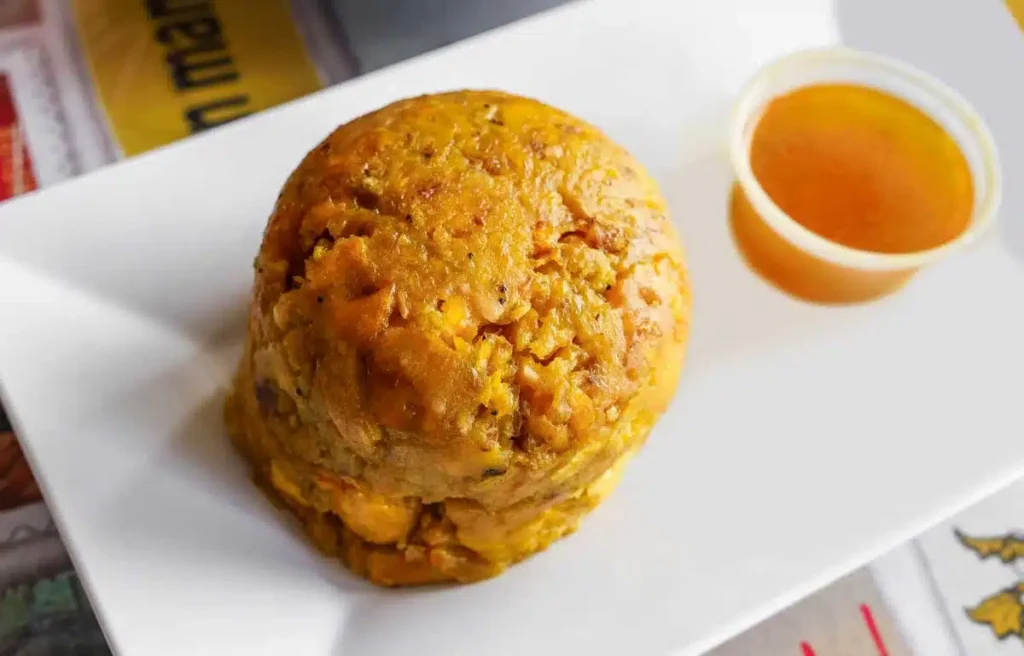
1. Weight Management and Reduced Caloric Intake
- By substituting high-calorie ingredients with lower-calorie options, such as baked or roasted vegetables, you can significantly reduce the overall caloric content of the dish. Lowering the fat content while using nutrient-dense ingredients like cauliflower or zucchini helps control portion sizes without sacrificing satiety.
- Additionally, the increased fiber content from vegetables can promote a feeling of fullness, making it easier to manage hunger and reduce overall caloric intake.
2. Lower Cholesterol and Improved Heart Health
- A low-fat version of Mofongo that uses heart-healthy fats like olive oil or avocado oil can help reduce LDL (bad) cholesterol levels while boosting HDL (good) cholesterol. This is especially beneficial for those who want to maintain cardiovascular health.
- Incorporating more vegetables and plant-based ingredients also adds to the dish’s nutritional profile, increasing intake of vitamins, minerals, and antioxidants that support heart health.
3. Enhanced Digestive Health
- Low-carb and low-fat versions of Mofongo that incorporate fiber-rich vegetables like cauliflower and zucchini can improve digestive health by promoting regular bowel movements and preventing constipation.
- The use of nutrient-dense, whole-food ingredients also supports a healthy gut microbiome, which is essential for overall wellness.
4. Blood Sugar Regulation
- By replacing high-carb plantains with lower-carb vegetables, such as cauliflower, the dish becomes more suitable for individuals monitoring their blood sugar levels, including those on a ketogenic diet or with diabetes.
- The lower glycemic load of these ingredients helps maintain stable blood sugar levels, avoiding the spikes that can occur with traditional, carb-heavy dishes.
5. Increased Nutritional Density
- The healthier variations of Mofongo introduce a variety of nutrient-dense ingredients, including cruciferous vegetables like cauliflower, healthy fats, and fresh herbs. This makes the dish not only lighter but also richer in vitamins, minerals, and phytonutrients that support overall health.
- For example, using cauliflower adds vitamin C, vitamin K, and folate, while olive oil provides essential fatty acids and vitamin E.
Creative Twists: Additional Healthy Mofongo Variations
While low-fat and low-carb Mofongo options are popular choices for healthier eating, there are plenty of other ways to customize this traditional dish to fit different dietary preferences. Whether you’re following a vegan, gluten-free, or even paleo diet, there are creative twists you can make to enjoy Mofongo in a way that aligns with your lifestyle.
Vegan Mofongo Recipe: Plant-Based and Delicious
- A vegan version of Mofongo can be just as flavorful by using plant-based ingredients without any animal products. Instead of pork cracklings, add roasted chickpeas or crispy tofu for a protein boost and crunch.
- Replace chicken broth with vegetable broth and sauté the garlic in a small amount of olive oil. You can also incorporate mashed avocado for creaminess and a nutrient-rich alternative.
- Season with spices like cumin, smoked paprika, and nutritional yeast to enhance the flavor profile, and garnish with fresh herbs such as cilantro or parsley for an extra burst of freshness.
Gluten-Free Mofongo: Enjoy the Classic Dish Without Gluten
- While traditional Mofongo is naturally gluten-free, some modern versions might incorporate ingredients or cooking methods that include gluten. Make sure to use gluten-free vegetable or chicken broth, and double-check that all spices and additives are gluten-free.
- For added crunch, consider using crushed gluten-free plantain chips or roasted nuts. Pair the Mofongo with a gluten-free protein such as grilled fish, chicken, or tofu to keep the entire meal free from gluten.
Paleo Mofongo: Keeping It Ancestral
- A paleo-friendly Mofongo focuses on whole, unprocessed foods. You can achieve this by using roasted plantains, sweet potatoes, or yucca as the base, which are all compliant with a paleo diet.
- Use bone broth or homemade vegetable broth for mashing, and include natural fats like coconut oil or avocado oil. Top the dish with shredded slow-cooked pork or a grilled meat of your choice to maintain the ancestral diet principles.
Mofongo with a Twist: Adding Superfoods
- To boost the nutritional value even further, consider adding superfoods like chia seeds, flaxseeds, or spirulina powder into the mashed mixture for an added health kick. These ingredients can be seamlessly incorporated without drastically altering the flavor.
- You can also mix in leafy greens such as kale or spinach, which provide a variety of vitamins and minerals. Blending these greens into the mash adds depth to the dish and makes it even more nutritious.
Frequently Asked Questions About Healthier Mofongo
Addressing common questions about healthier Mofongo variations can help clear up any confusion and offer practical advice for readers who want to try making this dish at home. Here are some frequently asked questions about preparing a lighter version of Mofongo.
Conclusion
Healthier Mofongo variations allow you to enjoy the traditional flavors of this beloved Puerto Rican dish while aligning with your dietary preferences. By using alternative cooking methods like baking or roasting and choosing low-fat or low-carb ingredients, you can savor Mofongo without the guilt. Whether you’re swapping out plantains for cauliflower, incorporating plant-based proteins, or experimenting with superfood additions, there are endless ways to make this dish suit your lifestyle.
The key to creating a healthier Mofongo is to preserve the dish’s essence—its savory, garlicky goodness—while embracing changes that enhance its nutritional value. With the right substitutions and cooking techniques, you can achieve a satisfying and delicious meal that fits into a variety of diets, from low-carb and vegan to paleo and gluten-free.
So, go ahead and try these healthier Mofongo recipes. Experiment with different variations, mix and match ingredients, and find the perfect version that suits your taste buds and health goals. You’ll discover that eating healthy doesn’t mean sacrificing flavor—it just means getting creative in the kitchen.

